This tiny speck on the map is worthy of monumental praise.
Growing up in Cebu, my favorite foreign stamps were from Andorra, Liechtenstein, the Vatican, Monaco, and San Marino simply because of their eye- catching mega-sized seals. They came in a variety of unconventional shapes and styles, designs and dimensions.
I had this strong belief that the largest prints were from none other than utopian nations with towering timbers, soaring skyscrapers, enterprising industries with big businesses, and undefeatable defense forces.
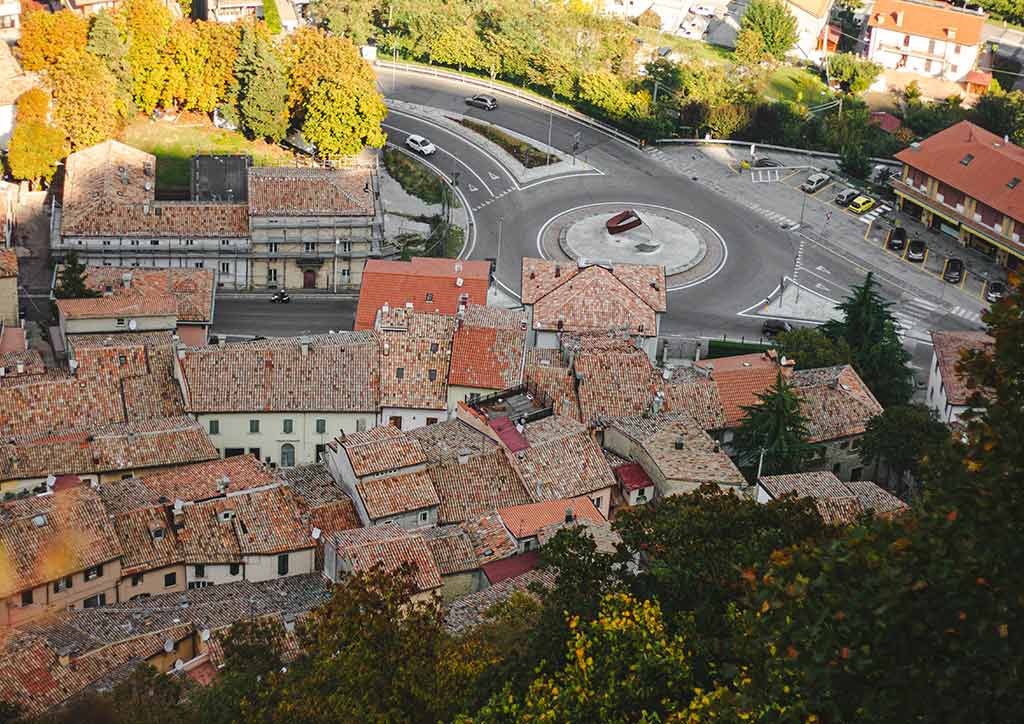
However, as the years passed by, my thirst for knowledge increased. And with the aid of encyclopedias supplemented by scrutinizing library-grade globes with the correct axis tilt to boot, I soon verified my cherished stamps were from microscopic specks on the maps.
They were among the smallest countries in the world! Due to this childhood discovery, I have since incorporated visits to these tiny—yet as important as any other—states to my ever-expanding bucket list.
My past life involved the active promotion of our islands to initially would-be tourists, then some possible repeat guests, and lastly, eventual investors. Though I was a temporary resident of London—with Europe as an area of jurisdiction—I had limited reach to other destinations, as we continuously limited our visits to city capitals and other major hubs.

During a recent Mediterranean and Adriatic Cruise on board the Royal Caribbean’s Rhapsody of the Seas, we docked by the port of Ravenna, Italy. A city I have visited before, it brings about fond memories of excellently preserved mosaics and architecturally admired churches and buildings from the early Christian and Byzantine eras. It was, after all, the capital of the Western Roman Empire.
But the minute we learned we were only 80 kilometers away from San Marino—with apologies to Ravenna—we immediately headed to the 62-square-kilometer independent realm. It was a most certain now-or-never decision.
Design and architecture
According to local folklore, San Marino, founded by a Christian named Marinus of Rab in 301 AD, makes it the world’s oldest state.
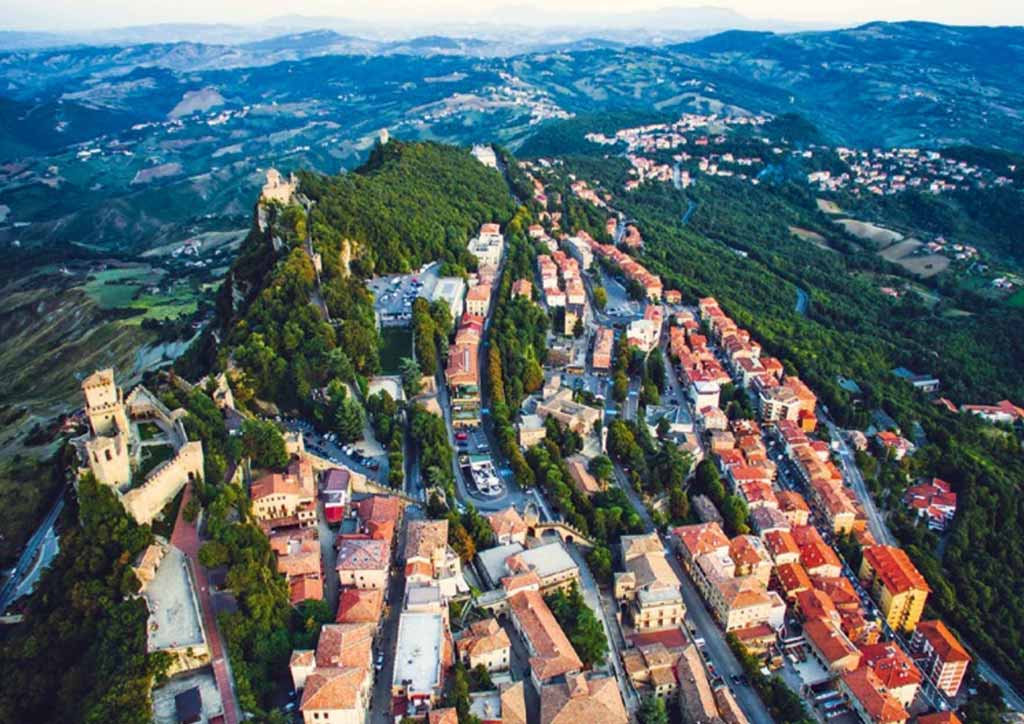
It is situated within Italy in Southern Europe, specifically between the Emilia-Romagna and Le Marche borders. This landlocked enclave in the Apennine Mountain Range possesses hilly topography, with steep and craggy exteriors, coupled with spikes and crevices. With no flat grounds, the perfect refuge for victims who escaped from religious persecution.
We were alerted by our young postgraduate tour guide-cum-driver of our full day extensive walking tour. This he did as he laboriously searched for the evasive free parking space close to the sturdy gate, leading to the fortifications.
We initially drove around in small circles, and at times wider circumferences, bringing to our attention towering mountains and rolling hills, verdant valleys, and vast landscapes, castles and palaces, and even a cable car—all punctuated by three domineering towers.
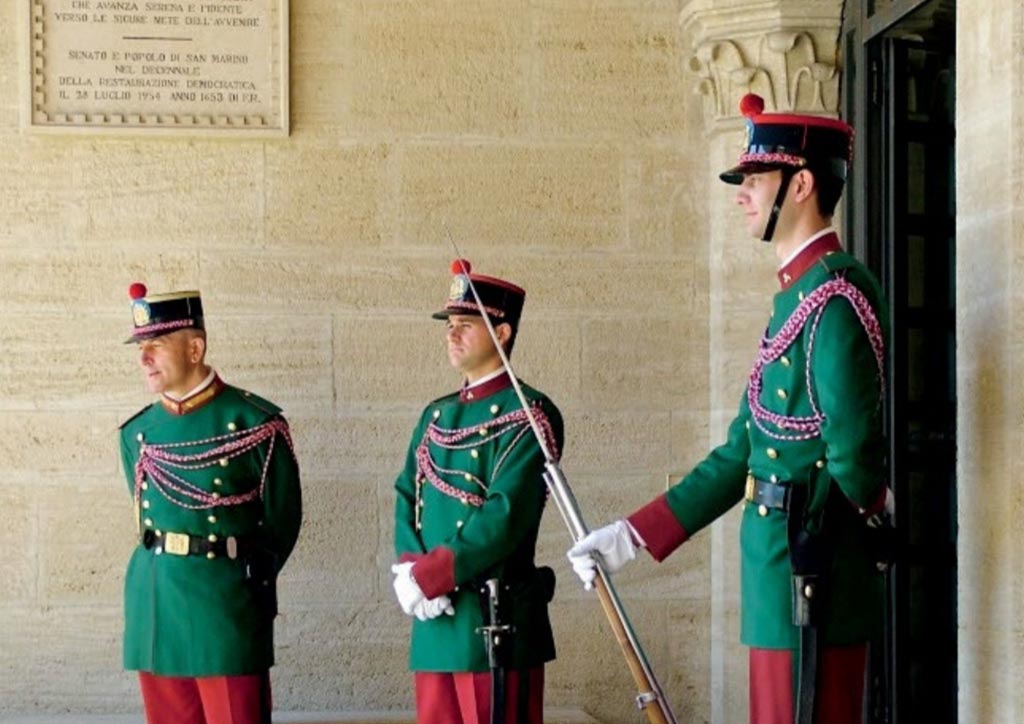
Our on-foot exploration started at the Porta Della Frata. There, we walked on seemingly certified pedestrian roads, and vehicles were few and seldom crossed our paths.
It had never-seem-to-end ledges, flanked by basilicas, cathedrals, and churches from different periods, ancient storied office buildings, solid stone homes some covered with crawling vines and flowers in pots just below the upper windows. Distinct commemorative memorials of admirable heroic deeds abound along with rustic yet functional water fountains, restful parks, and sculptured pieces that struck artists’ fancies.
We limbered on to the pulse of the nation—the Piazza Della Libreta, the city square where interestingly enough, we spotted their own version of the Statue of Liberty.
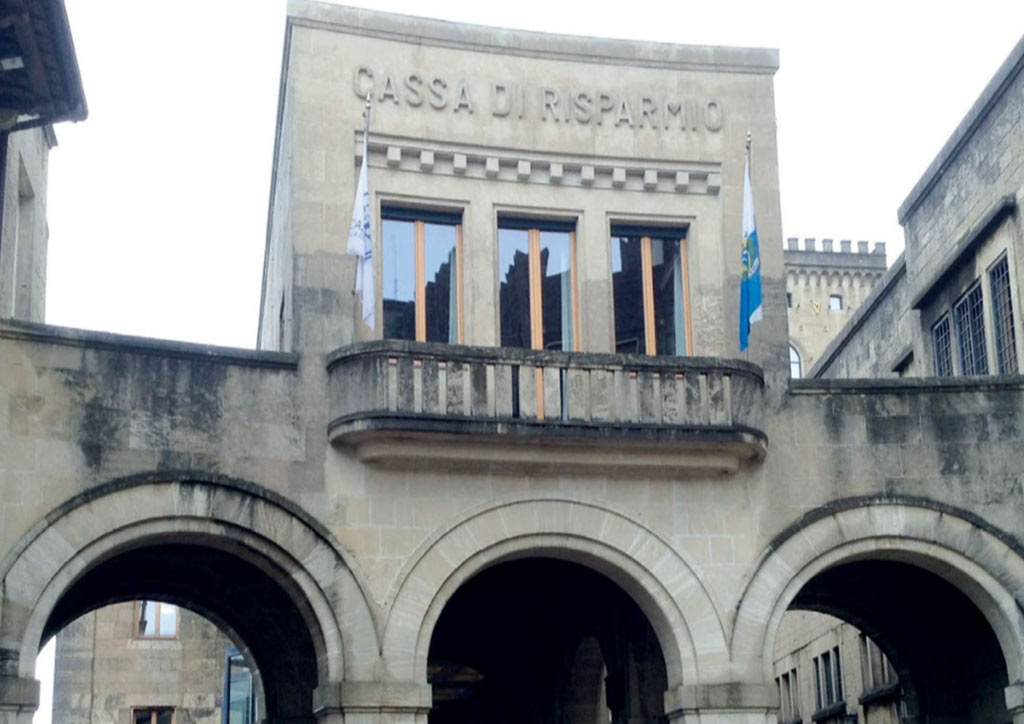
Standing proudly was the Palazzo del Governo, also known as Palazzo Publico, the most important government office building. Erected by Italian architect Francesco Azzurri between 1884 to 1894, it is the seat of the Republic that accommodates the main administrative bodies and the venue where state ceremonies take place. Split into three sections, it boasts of a tall clock tower which has become a permanent fixture in their local skyline.
Open to the public in 1894, it was way ahead of similar institutions such as the Buckingham Palace in London and the White House in Washington DC, in terms of opening their doors to the people they serve.
Their not-so-usual election process is not to be reckoned with. The Parliamentary Council of 60 members chooses two Captain-Regents to be the Heads of State, with each term only good for six months each. At the end of their service, any dissatisfied citizen only has three days to file their complaints.
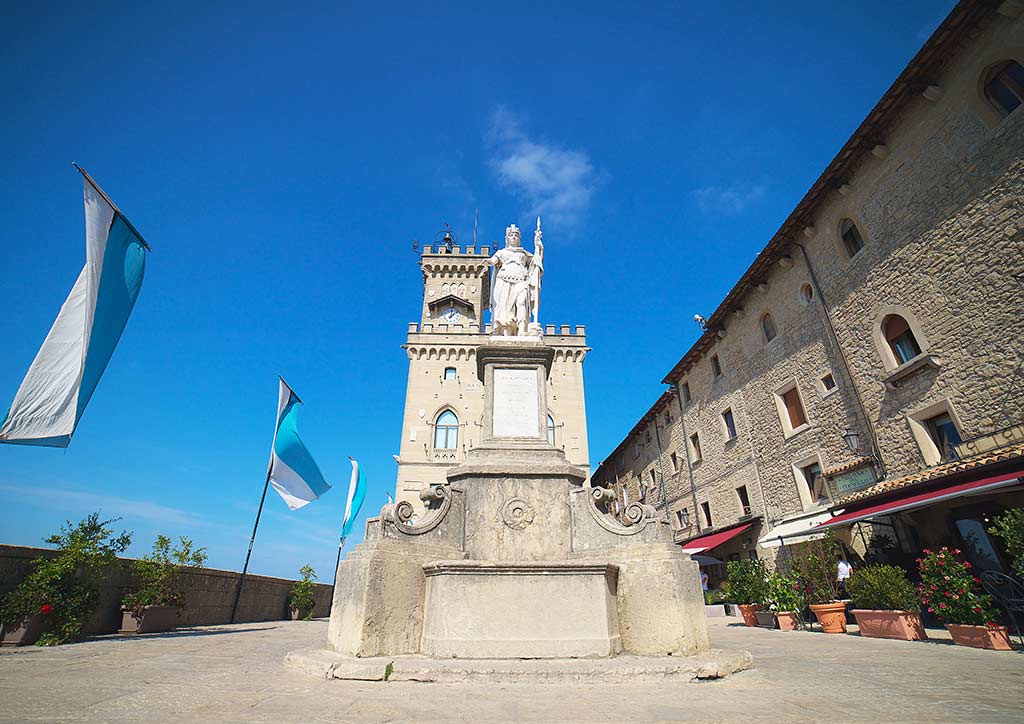
We presume the country has among the smallest armed forces in the world. Yet, they still observe and conduct with pride the ceremonial Changing of the Guards, each half past every hour.
Nearby, we caught a glimpse of a number of crossbowmen from another branch of the armed forces, which competes and successfully gains honor in global tournaments.
Art and history
Our first stop on the series of church visitations was the Basilica del Santo Marino, classic in its simplicity, designed and rebuilt from the former ruins by Bolognese Architect Antonio Serra in 1825.
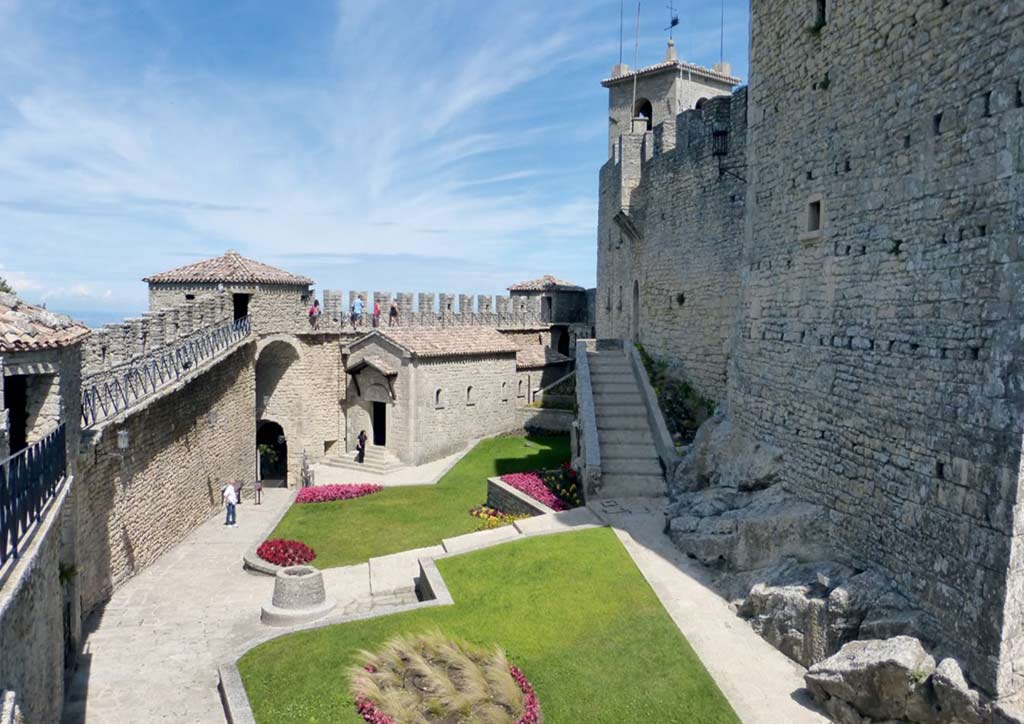
Flanked by a Corinthian column nave, the skull of the patron saint can be found in a gold and silver case below the High Altar. Not to be missed is the astonishing marble true-to-life sculpture of San Marino by Giulio Tadolini, a student of the popular artisan Antonio Canova.
Inside the Saint Peter Church is a domed ceiling splashed with golden decorations. The main altar has a statue of the apostle and the first pope by monumental specialist Enrico Saroldi.
It hosts a commemoration associated with the papacy of Pope John XXIII. While there are two sections, according to legends, rumored to hold the stone beds of Pope Leo the First (also known as Leo the Great) and his deacon, San Marino.
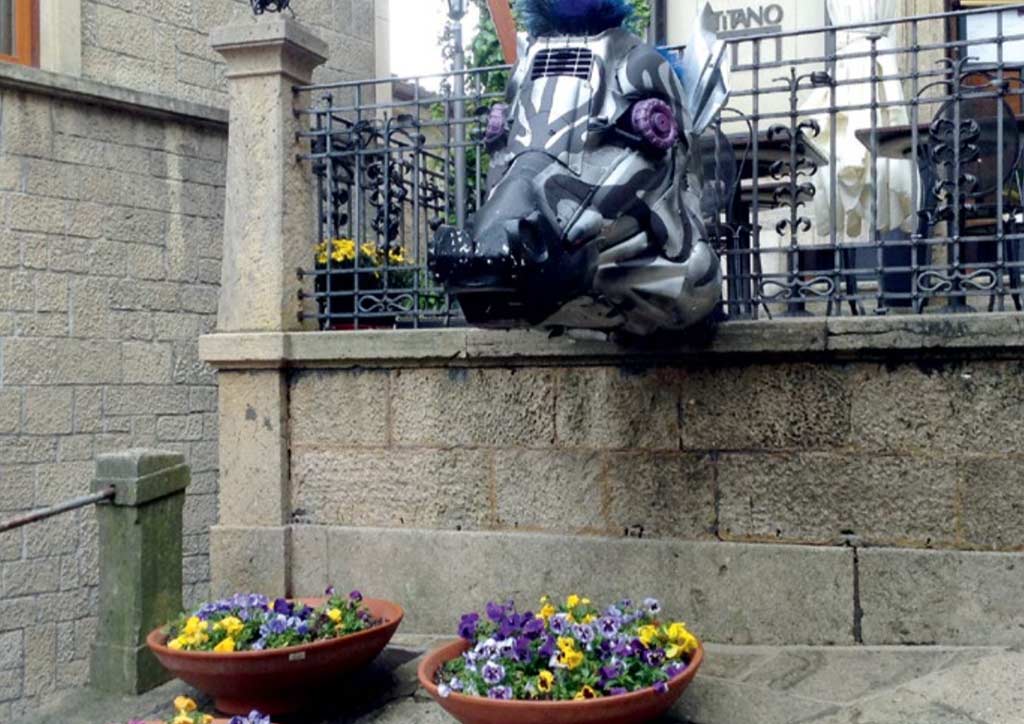
Our religious terminus was the St. Francis Church, a house of prayer, a museum and an art gallery—all rolled into one. Built in 1361, it serves as a hideaway for paintings and statues such as Esopo by Luca Girolamo, Ecstasy of St. Francesco by Tiziano Vecellio, and Dead Christ and Saints by the School of Marches.
We were taken by surprise by the numerous depositories in such a compressed area. The State Museum alone has some 5,000 priceless artifacts and archeological treasures. Of interest was the golden clasp of an ancient princess only known as Domagnano.
We had time to breeze through some pocket museums featuring exhibits on torture and modern arms.
Curiously enough, we stayed longer at the Museum of Curiosities, a first for us. It offered a collection of the fascinating and the strange, such as the most tattooed man, a reminder of past carnabal days in some remote barrios.
All over the city streets are several figures and busts, which made the entirety of San Marino an open museum.
Some standouts include Monument to “Peace,” by Oikonomoy, “Monument to Melchiorre Delfico,” by Saroldi, “Monument to Bramante Lazzari,” by Gentiloni, “Monument to Marino Capicchioni,” by Reffi, and “Neutrality,” by Guguiani. Mahatma Gandhi and Guiseppe Garibaldi monuments pay homage to these larger-than-life figures of history.
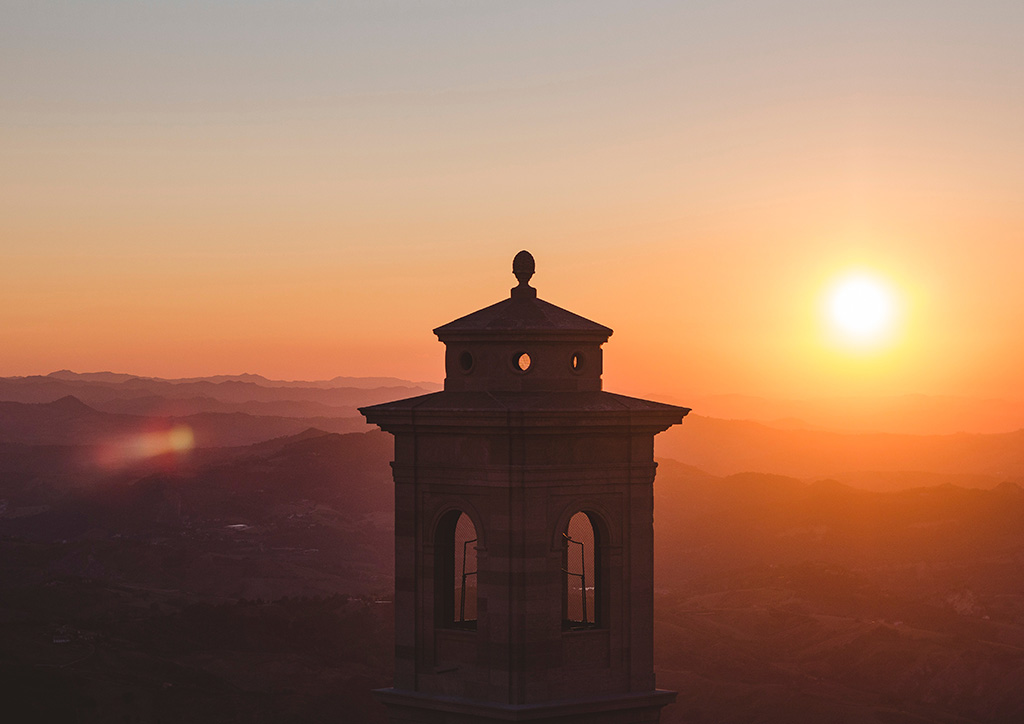
As we happily sipped on our cups of coffee with homemade delicious delicacies, we noticed the same three pillars—La Rocca o Guaita, La Cesta o Fratta, and Il Montale— always looming over us from a distance.
They are now surrounded by low clouds that have descended over the horizon. We vowed to return to explore the yet unexplored, with no rock left unturned on this underrated magical destination which definitely deserves a whole lot more love.
This story original came out in the July 2019 issue of Lifestyle Asia.





